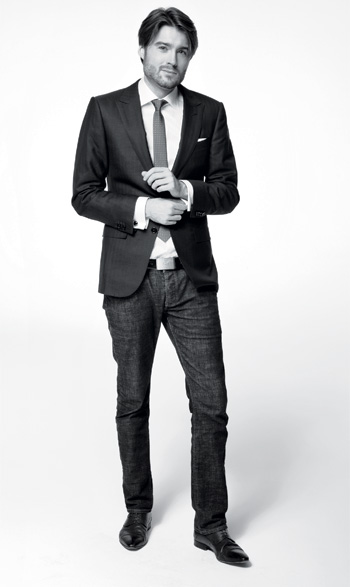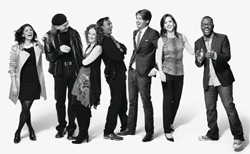Pete Cashmore is the CEO of Mashable. At 19, he founded the tech blog in Scotland, which has grown into a monster site for social news. Mashable has more than 2 million Twitter followers.
@font-face { font-family: 'FCKaiserCondWebRegular'; src: url('/sites/all/themes/fc_v1/scripts/mod2011/fckaiser-cond-web-regular-webfont.eot'); src: url('/sites/all/themes/fc_v1/scripts/mod2011/fckaiser-cond-web-regular-webfont.eot?#iefix') format('embedded-opentype'), url('/sites/all/themes/fc_v1/scripts/mod2011/fckaiser-cond-web-regular-webfont.woff') format('woff'), url('/sites/all/themes/fc_v1/scripts/mod2011/fckaiser-cond-web-regular-webfont.ttf') format('truetype'), url('/sites/all/themes/fc_v1/scripts/mod2011/fckaiser-cond-web-regular-webfont.svg# FCKaiserCondWebRegular') format('svg'); font-weight: normal; font-style: normal; }
.kaiser, .kaiser a {font-family: 'FCKaiserCondWebRegular', Helvetica, sans-serif !important; font-weight: normal; letter-spacing: 1px; line-height:1; font-size:40px!important;color:#333; text-decoration:underline;}
.kaiser a:hover {color:#666;}
.kaiser {text-decoration:none;font-size:30px!important;}
.sidebox {float:right;border:1px solid #e6e6e6;background-color:#fafafa!important;width:200px;padding:5px;margin:0px 0px 10px 10px;}
.sidebox a {color:#e80681;font-weight:bold;}
.sidebox p {font-size:13px;}
.bottombox {background:#f2f2f2;border:1px solid #d8d8d8;padding:15px;}
.bottombox img {display:inline-block;vertical-align:middle;width:50px;height:50px;padding:6px;}
.bottombox a {display:inline-block;vertical-align:middle;width:70px;font-size:12px;line-height:1.2em; color:#e8007e;font-weight:bold;}
 Photo by Brooke Nipar
Photo by Brooke Nipar
On the eve of Thanksgiving, Pete Cashmore is neither basting a turkey nor preparing for football. "It's not my holiday," the Scotsman remarks. Instead he's in Vancouver, preparing for a long weekend of R&R. Which the 26-year-old has certainly earned. Mashable, the tech-and-social site that he launched with a blog as a 19-year-old, now attracts more than 20 million unique users a month. "We're a news site for the digital generation," he says. "It's our responsibility to show how social and digital is changing the world."
"All these industries are being revolutionized," he says. "It's come to technology first, but it will reach every industry. You're going to have businesses rise and fall faster than ever. I'm part of a generation that thinks change is good or at least inevitable, so you might as well embrace it."
Though now labeled on blogs as a tech hunk, Cashmore was sickly as a child, and turned to the Internet both for engagement and socializing. It became a passion--and a way into the business world. "When I started in Aberdeen, we didn't have tech courses, it wasn't startup land," says Cashmore, who finished high school two years late, due to various medical complications, and never went to college. "I started writing about new companies, websites, and applications so I could learn how it works and how to build companies. I didn't know that was going to be the company."
Meet The Rest Of Generation FluxOther Flux-ers recommended by Pete Cashmore.
Ann Grimes Director, Graduate Program in Journalism at Stanford Bio
Josh Koppel Co-founder and Chief Creative Officer, ScrollMotion ScrollMotion
Terry McDonnell Editor, Sports Illustrated Group @SI_TMcDonell
Sharon Feder Publisher, Mashable @sharonfeder
Adam Ostrow SVP Content and Executive Editor, Mashable @adamostrow
Robyn Peterson SVP Product and Tech, Mashable @robynpeterson
"I've been quite comfortable learning as we go," he says of Mashable's business model. "When we started, our core was covering startups and new companies. Then, when we saw that our audience was active on social media, we built community alongside. Now that it's clear digital runs through everything in our culture, we want to be everywhere in our coverage: marketing, the Arab Spring, the political realm, movies."
So which of the more traditional industries that haven't been totally disrupted by technology are most likely to join his target list? "The bank is going to be next," predicts Cashmore. "It hasn't been revolutionized yet, in part because of legal and security concerns. A kid in a garage can't set up a bank, right? But now you see it changing with Square, NFC chips. Wallets are going to phase out over the next five or six years, it's all going to change. It's like the printed newspaper: It may last in some form, but this is where the growth is going to be."
That sort of disruption doesn't concern Cashmore; it excites him. He feels the same way about Mashable's business. "I don't have any personal challenges about throwing away the past," he says. "If you're not changing, you're giving others a chance to catch up. Even if you know everything about a certain market now, in a few years you're going to have to start from scratch like everyone else."
"Great brands do a great job of being a chameleon. Virgin America, Starbucks: They define a certain kind of person and then build a tool-set around that person. Starbucks isn't about coffee, it's about a culture." This is what he's trying to emulate in his business. "Everyone at Mashable is web-centric, digital-first--we're all social in our DNA. Our audience is early adopters, and the staff is from the same demographic."
He recognizes that the age of Flux can be difficult for some people. "The typical mindset understates the risk of not changing and overstates the risk of change," he observes. "It's just a trait of being a human." But in the big picture, he says, the need for change is overwhelming: "It's fundamentally a good thing: Human progress is accelerating. As a species, we have so many problems. If we change fast enough, we could solve them before things become disastrous."
 Generation Flux
Generation Flux The future of business is pure chaos. Here's how you can survive--and perhaps even thrive.
Also, read the full profiles.
 danah boyd
danah boyd
 DJ Patil
DJ Patil
 Baratunde Thurston
Baratunde Thurston
 Beth Comstock
Beth Comstock
 Pete Cashmore
Pete Cashmore
 Raina Kumra
Raina Kumra
 Bob Greenberg
Bob Greenberg